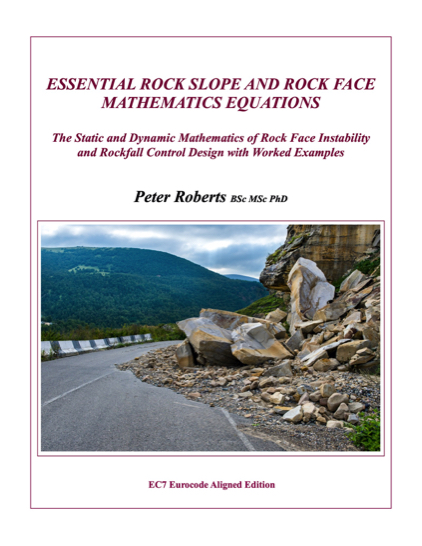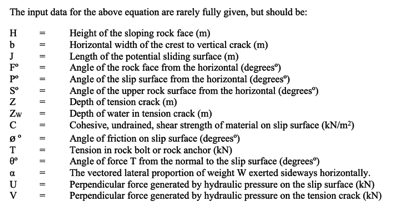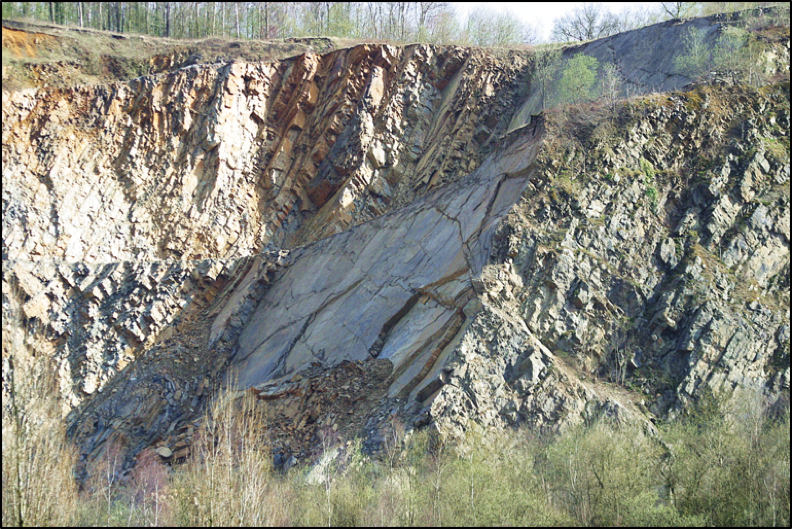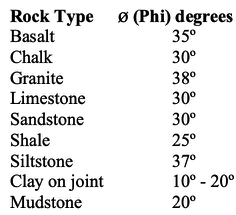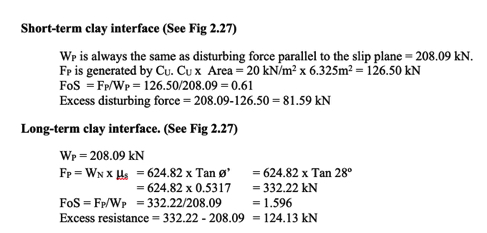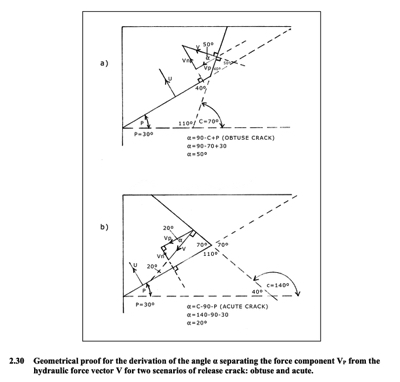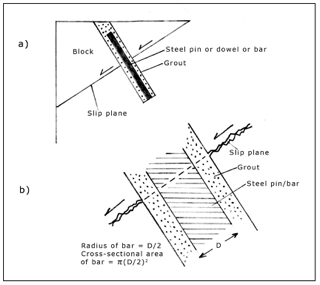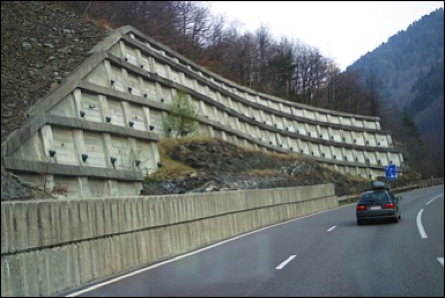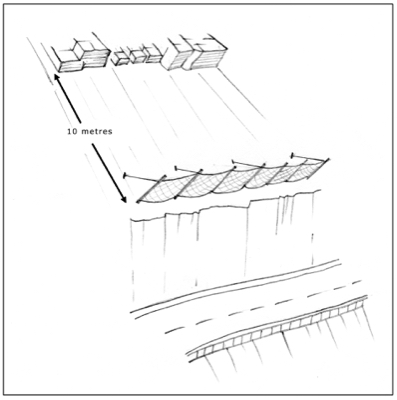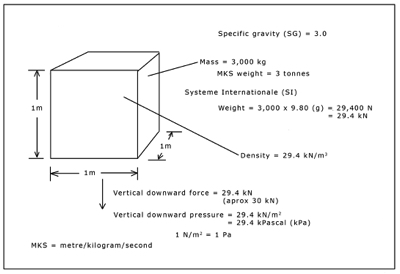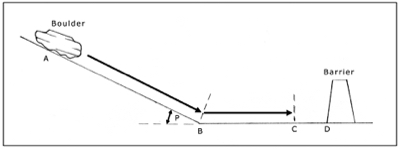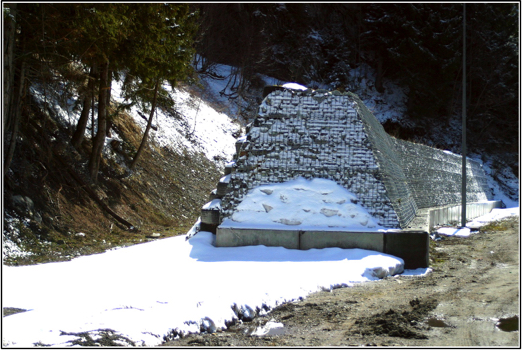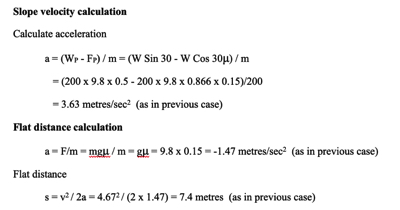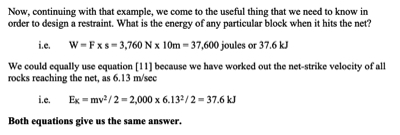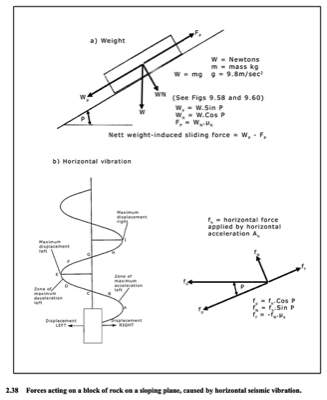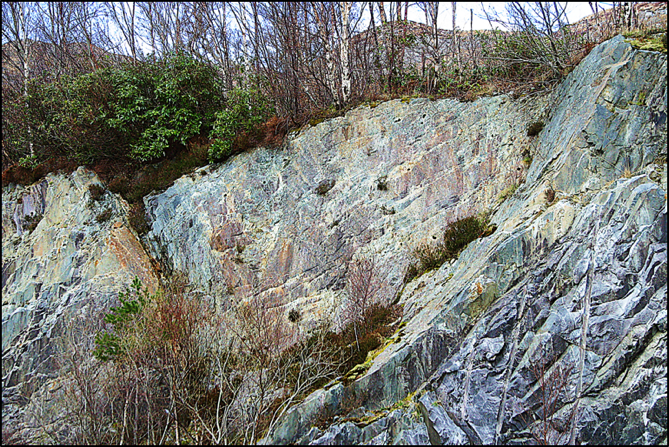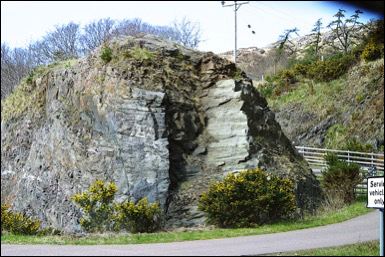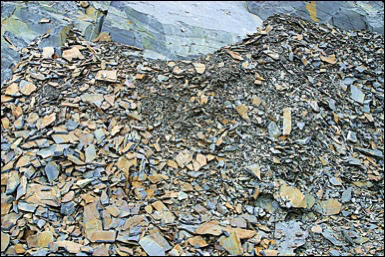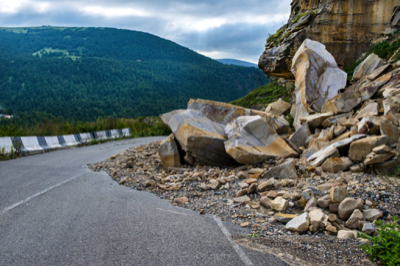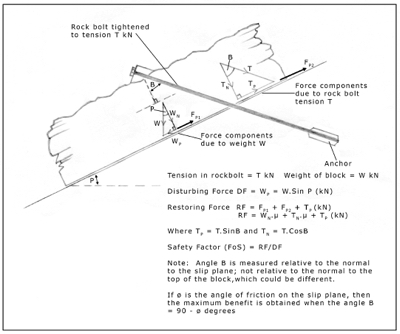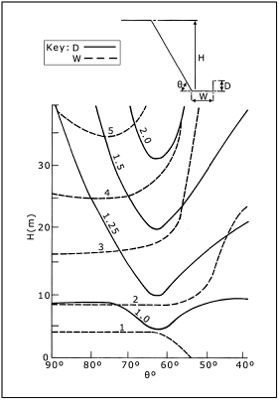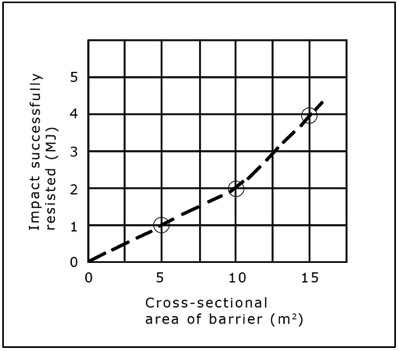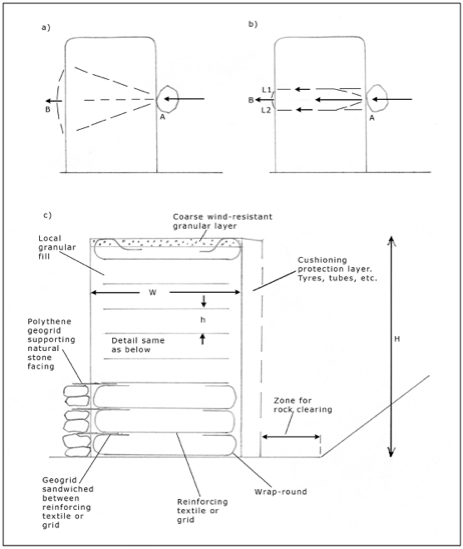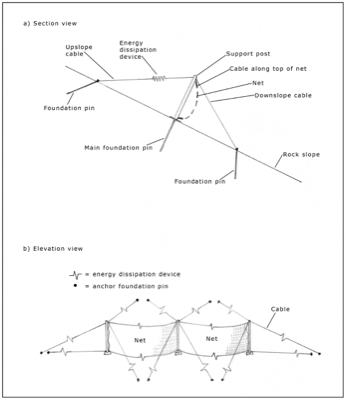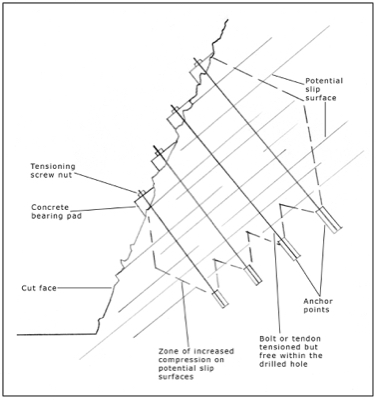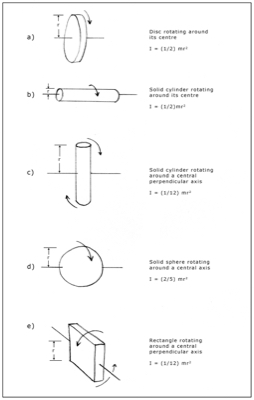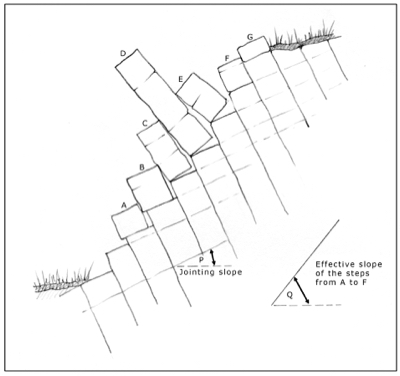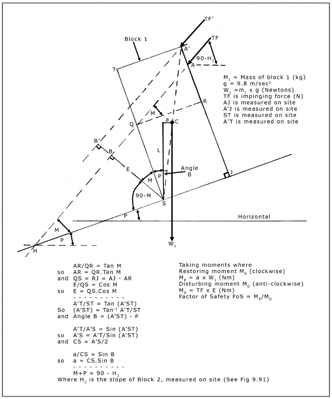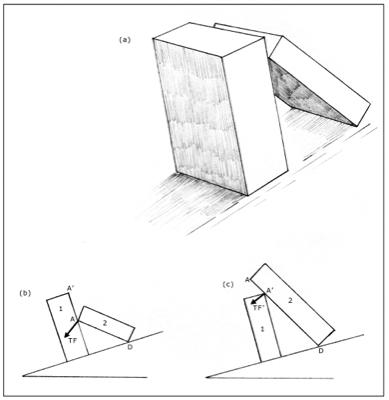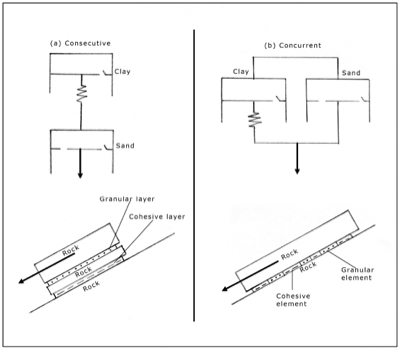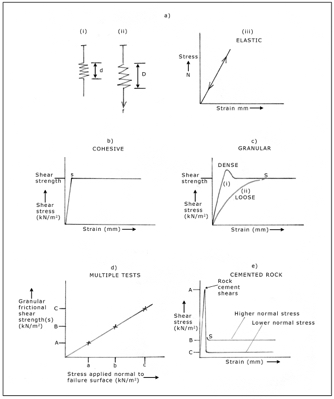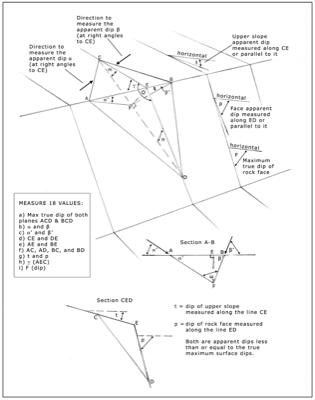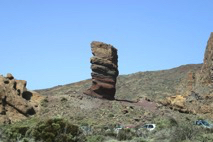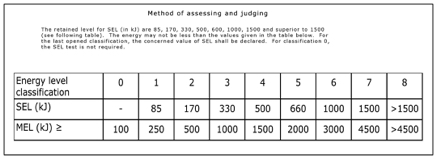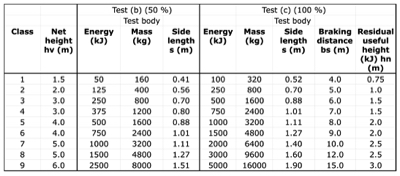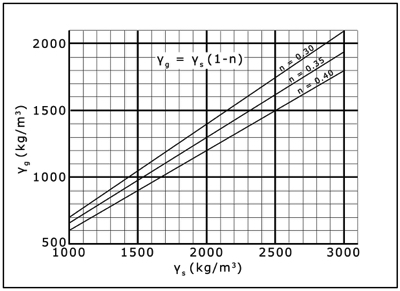
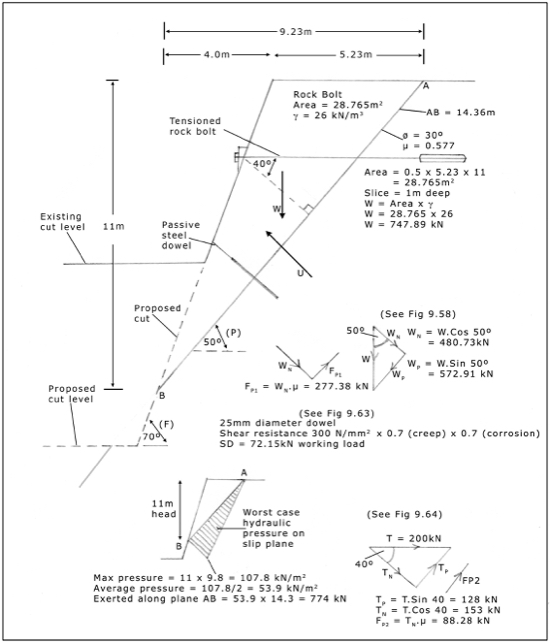
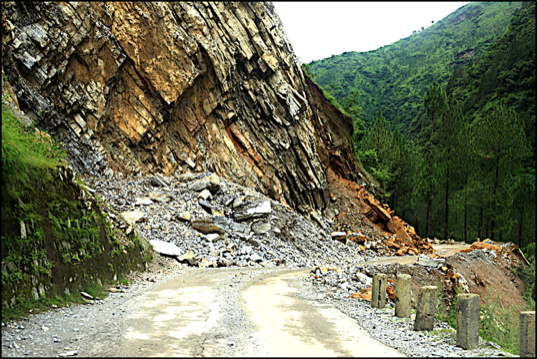
About the Book
This book is extracted from what is arguably the most comprehensive book currently available in the subject field: "ROCK SLOPE AND ROCK FACE ENGINEERING" published by Russet Publishing at russetpublishing.com. Leaving out the geology, it concentrates on making the mathematics easy and fully explained, so it is not aimed at the specialist expert rock mechanics engineer but can be used by any graduate engineer working in the fields of highway construction, geology, geotechnical engineering, civil engineering, mining, quarrying, or rock mechanics.
It presents the essential mathematics needed to analyse the static and dynamic forces acting upon the bedding, joints, and other discontinuities of potentiallly unstable rocks and moving rock masses for you to design appropriate pinning, bolting or anchoring systems to control and prevent movement.
Within, you will also find the simple mathematical equations needed to analyse the dynamic behaviuour of individual boulders and sliding rock masses in order to calculate their rolling, bouncing, or sliding velocities and thus their kinetic energies. Using this information, the book provides calculation procedures you can apply in the design of control and mitigation structures for the capturing or deflection of moving rocks or rocks masses.
Containing 51 photographs and 91 diagrams—of which 87 are hand-drawn by the author—and with worked examples and units presented for each calculation scenario, this book ensures that yyou will be able to apply every equation and design solution illustrated within it.
Some questions that "Essential Mathematics Equations" will allow you to answer:
If I cut the required slope in that rock, will any of it fail out in the short-term, or the long-term? How much will fail out? Can I prevent that by restraining it? If not, what velocity will the mass of rock reach at the base of the slope? Will it slide, roll, or bounce? How far will it travel before it stops moving on its own? How much energy will I need to absorb if I want to stop it before or at the base of the slope? What kind of structure should I design to do that? What are the dimensions and technical specifications for that structure? What effect will it have if a 0.3G peak acceleration earthquake takes place in the vicinity of my cutting? Can I calculate that effect and insert it into my equations?
If you want to be able to say that you know how to break large sites down into modular units for numerical analysis, and you want to know the range of mathematical equations that you will need to solve those modular problems, then this book is for you. It contains a rapidly-accessible table of 26 brief, easily-understood and well-explained equations togther with all of the relevant units specified so that nothing remains to hold you back from applying them.
If you would like to say that you know where to find those necessary equations and how to apply them, then all you have to do is read this book from beginning to end and then put it on your bookshelf where you can find it easily. That's all.
The first thing you will need to do to appreciate the usefulness of the information contained in this book, is to look at the Table of Contents below. Then ask yourself where else could you find all of this information in a single, modern book, with fully worked examples, and with a practical guide to actual remedial equipment and materials used. Yet, despite the complexity of the topics covered, the author has concentrated on using the simplest analyses, and always uses worked examples, so that the design engineer can be confident he/she has the proper units and has completed his/her calculations correctly.
The specialised nature of this book means that if you could have only one book on the requisite maths, then this would have to be it. It will be your go-to reference book and mentor.
Professor Roberts' approach is to eschew the huge, deep-faced mining pits that you will never encounter in your working career. They are the remit of the highly advanced specialist. This book addresses and aids the standard, competent, working geologist and engineer needing to find a book that he/she can understand at first read.
This is arguably the most compactly useful book currently available on this specialised subject. It was created for professionals who already know their basic geology and engineering, but who seek to find a reliable source for the maths.
No wonder it receives five-star reviews!
CONTENTS
Preface
1. Introduction
2. MATHEMATICS OF ROCK SLOPE AND ROCK FACE CONTROL
2.1 Different types of rock movement
2.2 The mathematics of planar sliding
2.2.1 Static forces controlling the stability of stationary rock blocks
2.2.2 The recommended, simplified, modular approach
2.2.3 Dynamic forces controlling the behaviuour of moving rock blocks
2.3 The modular mathematics of wedge sliding
2.3.1 Determination of the dimension of a wedge by field measurement and calculation
2.3.2 Specification of the various physical restraining propties of the wedge on its
potential sliding planes' interfaces
2.3.3 Simple global analysis
2.3.4 Wedge 'Partition Method' with rigid response
2.3.5 Wedge 'Partition Method' with deformable response
2.4 Concepts of shared stress and cumulative strain
2.5 Mathematics of toppling rocks
2.5.1 Rocks standing alone
2.5.2 Rocks subjected to external forces
2.6 Mathematics of rolling rocks
2.7 Mathematics of falling rocks
2.8 Mathematics of bouncing rocks
2.9 Mathematics and principles of impact absorption
2.10 Seismic activity and its effects
3. ROCK CONTROL SYSTEM TYPES A, B, C, & D
4. TYPE A - NO ACTION NECESSARY
5. TYPE B - ACTIVE INTERVENTION SYSTEMS
5.1 Rock pins
5.2 Rock anchors
5.3 Hawsers
5.4 Meshes/nets
5.5 Sprayed concrete
5.6 Relocating rocks
6. TYPE C - PASSIVE INTERVENTION SYSTEMS
6.1 Wire fence barriers
6.2 Concrete and block wall barriers
6.3 Free-standing granular barriers
6.4 Reinforced soil barriers
6.5 Gabion barriers
6.6 Lateral diversion structures
6.7 Vertical diversion structures (shed tunnels)
6.8 Rock guidance nets
6.9 Catchment ditches
7. LIST OF DYNAMIC EQUATIONS - ADVICE, GREEK SYMBOLS
7.1 Essential dynamic design equations
7.2 Greek lettes used in equations
8. PHYSICS GLOSSARY
8.1 Some useful terms
9. BIBLIOGRAPHY
Would you like to have all the knowledge that is in these diagrams, as well as in the other 70+ diagrams and illustrations in my book?
If so, just buy it!
Rock Slope Engineering
Peter Roberts
Rock Face Stability
Rock Mechanics
Reinforced Soil
Stereonet
Essential Rock Slope and Rock Face Mathematical Equations
Prof Dr Peter Roberts
Essential Rock Slope and Rock Face Mathematical Equations
The Static and Dynamic Mathematics of Rock Face Instability and Rockfall Control Design with Worked Examples.
Published by Russet Publishing 2021. 315 US Letter-sized pages.
£32.00. Three copies are downloaded for you. One each for any combination of desktop computer, laptop, and/or tablet. Three PDF files will be sent, locked to either your personal or your work email address for your security. See our TERMS for necessary details.
This modern book is written for geologists, engineering geologists, and civil engineers working in the fields of geotechnical, highways, and civil engineering, as well as in the mineral exploration and quarrying industries. It will also, no doubt, be useful for undergraduates, as it forms a comprehensive introduction and contains a unique, compact, guide to the essential mathematics equations for both static and dynamic modular analysis.
This book provides the user with the real, practical, information that will give him/her the confidence to assess the potential instability of any site. Using the equations, it explains how to calculate the static and dynamic forces to be overcome in any required short-term and long-term stabilisation works. It explains how to specify the requirements of the materials and methods necessary to achieve the required states of stability.
The great majority of the diagrams are drawn by Peter Roberts himself, thus reducing possible artistic error through the re-drawing process. The book contains numerous worked examples. Although capable of being used anywhere in the world, this book conforms to modern limit-state design procedures.
There is arguably no equally balanced practical or useful book available elsewhere.
ISBN 978-1-910537-44-2 Electronic High-Resolution PDF version. EC7 Aligned.
HE LIKED IT—SEE IF YOU LIKE IT BEFORE YOU BUY
THIS BOOK IS ONLY AVAILABLE FROM RUSSET PUBLISHING
High definition electronic PDF version. 3 for the price of 1.
You can download to any three devices of your choice. For example, your work computer, your personal PC/laptop, your tablet or your smartphone. It's up to you.
Buy directly from us at Russest Publishing
£32.00 VAT-free. (No P&P. No print and no postal delay.)
Add to cart and set quantity required on the cart page
For every one you order, we will send 3 for your personal use
THESE ARE SOME OF THE 120+ FIGURES AND COLOURED PHOTOGRAPHS FROM THE BOOK
WHEN YOU BUY A TECHNICAL BOOK, YOU NEED TO KNOW EXACTLY WHAT IS IN IT AND WHAT YOU ARE BUYING.
SO, SCROLL DOWN AND READ ON:
By clicking "Add to Cart", you confirm that you have read and agreed to our terms of business and payment procedures.
This book contains the extracted mathematics from Dr Roberts' larger, more general, textbook entitled, "Rock Slope and Rock Face Engineering", which is also available from Russet Publishing. Below is an extract from an unsolicited review of that main book by a senior member of a UK consulting practice:
All in all, engineers with experience of this type of work will appreciate having this book at their finger tips and it comprises valuable reading for anyone wanting to fully understand the elements of rock slope engineering.
I had no difficulty in downloading the book. I have already used it to aid in a couple of recent schemes and I have urged my team to make sure that they purchase a copy for themselves.
Order 1 and get 3 downloads
